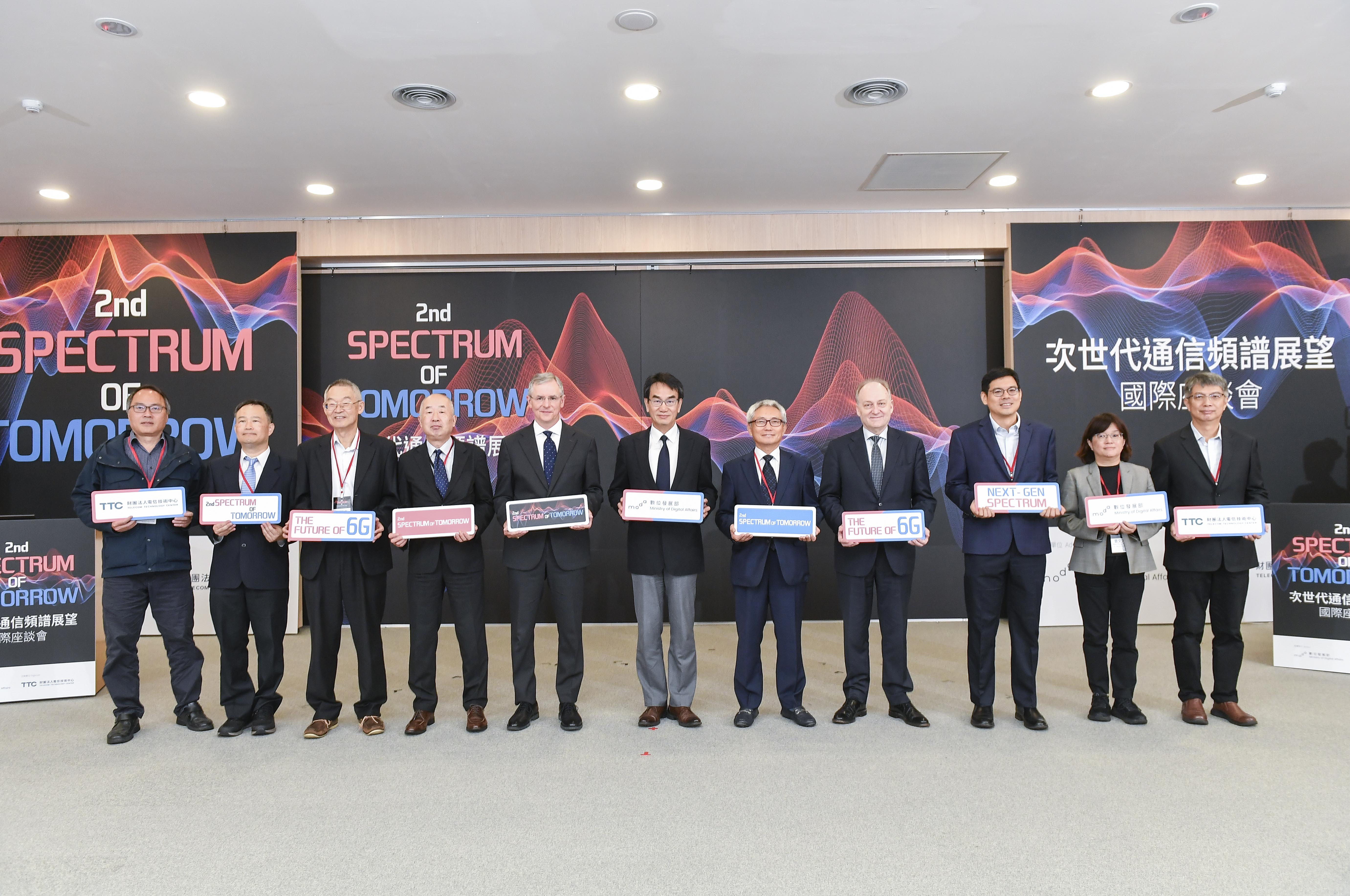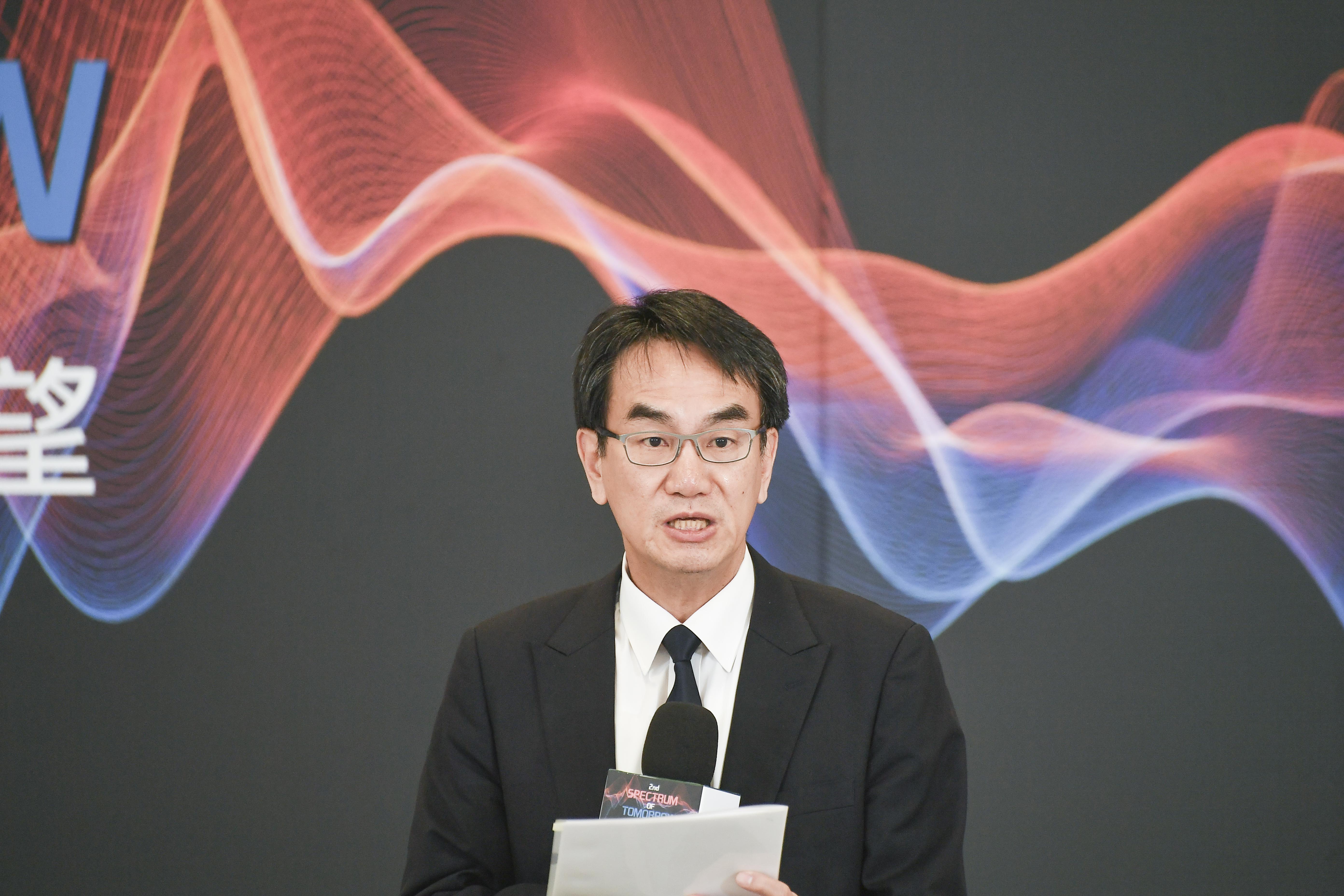"2nd Spectrum of Tomorrow" Is Great Success: ITU-R, APT, and Industry Leaders Convene to Discuss 6G Spectrum, Ground-Air Integration, and Dynamic Sharing
Minister Lin Yi-jing of Digital Affairs attended the "2nd Spectrum of Tomorrow" on September 17 to jointly explore the development trends and application prospects of 6G technology with international standard-setting organizations, including the International Telecommunication Union Radiocommunication Sector (ITU-R) and the Asia-Pacific Telecommunity (APT), as well as global industry leaders such as Qualcomm and Ericsson, alongside domestic experts from industry, government, academia, and R&D. Minister Lin stated that the forum focused on topics such as spectrum planning, non-terrestrial networks (NTN), and dynamic spectrum sharing. He expressed the hope that the event would help attendees better understand international trends, deepen cooperation, and move toward the new era of 6G.
The Ministry of Digital Affairs (MODA) stated that the forum featured insights from several key leaders regarding the evolution of 6G technology and the ground-to-air spectrum challenges posed by low-earth orbit (LEO) satellites. These leaders included Dr. Kyu-Jin Wee, Chairman of ITU-R Study Group 5; Nobuyuki Kawai, Chairman of the APT 2027 World Radiocommunication Conference Preparatory Group; John W. Kuzin, Senior Vice President of Qualcomm; and Magnus Ewerbring, Chief Technology Officer of Ericsson. Together, the speakers discussed the impact of these issues on the global 6G development environment.
MODA explained that if 5G is the engine driving digital transformation, then 6G will be the rocket propelling us toward a limitless future. The significance of 6G extends beyond faster network speeds and wider coverage. Its true importance lies in leveraging forward-looking spectrum resource governance to realize dynamic sharing and institutional innovation. This will ultimately ensure information and communication security and system resilience, thereby laying a solid foundation for the next generation of networks. Future network architectures will increasingly emphasize the integration and interoperability of terrestrial and non-terrestrial networks. This presents not only a technical challenge but also a significant opportunity to drive innovation.
MODA is actively researching dynamic spectrum sharing mechanisms and exploring both potential scenarios for ground-air integration and measures for harmonious spectrum sharing. This work is designed to enhance the integration of Wi-Fi, the Internet of Things (IoT), and terrestrial and non-terrestrial networks, thereby building a communications ecosystem that is innovative, inclusive, secure, and resilient.
Building upon last year's outcomes, this forum focused on key issues such as 6G spectrum readiness, non-terrestrial network applications, and dynamic sharing mechanisms, aiming to jointly grasp international trends, deepen cross-domain dialogue, and collaboratively embrace a new digital future.

